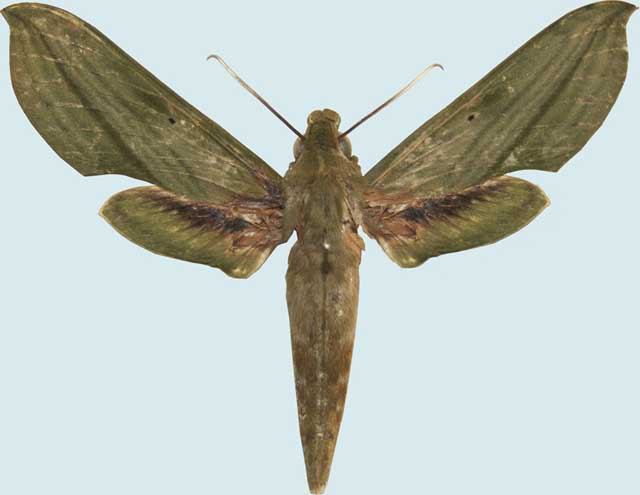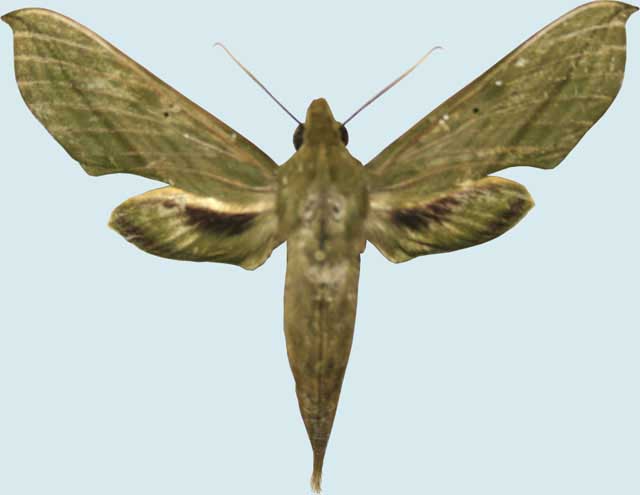Xylophanes hydrata
Xylophanes hydrata
Rothschild & Jordan, 1903

Xylophanes hydrata male, Rio Venado, Junin, Peru,
January 23, 2008, 1050m, courtesy of Vladimir Izersky,
identification by Bill Oehlke.
This site has been created by
Bill Oehlke at oehlkew@islandtelecom.com
Comments, suggestions and/or additional information are welcomed by Bill.
TAXONOMY:
Family: Sphingidae, Latreille, 1802
Subfamily: Macroglossinae, Harris, 1839
Tribe: Macroglossini, Harris, 1839
Genus: Xylophanes Hubner [1819] ...........
Species: hydrata Rothschild & Jordan, 1903
|
MIDI MUSIC
.....It's a Wonderful World.....
copyright C. Odenkirk
ON.OFF
<bgsound src="world.mid" LOOP=FOREVER>
|
DISTRIBUTION:
Xylophanes hydrata moths
fly in Brazil (specimen type locality) and west to Bolivia and Peru (CATE).
"Very similar to Xylophanes elara but slightly larger.
Outer spur of midtibia equal in length to inner spur.
Forewing upperside very similar to Xylophanes elara but postmedian lines and vein spots on submarginal line stronger.
Base of forewing underside similar to that of Xylophanes elara but postmedian line reaching at most from the apex to M3, beyond which it is
represented by a row of vein dots; often the line is formed solely from vein spots or can even be entirely absent." CATE
Specimens can be light brown (possibly faded) or even have a bluish-green cast.

Xylophanes hydrata, ALBCOL, on my home computer only.

Xylophanes hydrata, Peru, CATE, on my home computer only.
FLIGHT TIMES:
Xylophanes hydrata adults fly in November and January in Junin, Peru (VI).

Xylophanes hydrata female, Coviriali, Junin, Peru,
November 11, 2007, 662m, courtesy of Vladimir Izersky,
identification by Bill Oehlke.
ECLOSION:
Pupae probably wiggle to surface from subterranean chambers just prior to eclosion.
SCENTING AND MATING:Females call in the males with a pheromone released from a gland at the tip of the
abdomen. Males come in to lights very readily, but females are seldom taken in that way.
EGGS, LARVAE, PUPAE:
Larvae probably feed on
plants in the Rubiaceae family and Malvaceae families.
Moths emerge approximately one-two months after larvae pupate.
Use your browser "Back" button to return to the previous page.
Goto Main Sphingidae Index
Goto Macroglossini Tribe
Goto Central American Indices
Goto Carribean Islands
Goto South American Indices
Goto U.S.A. tables



